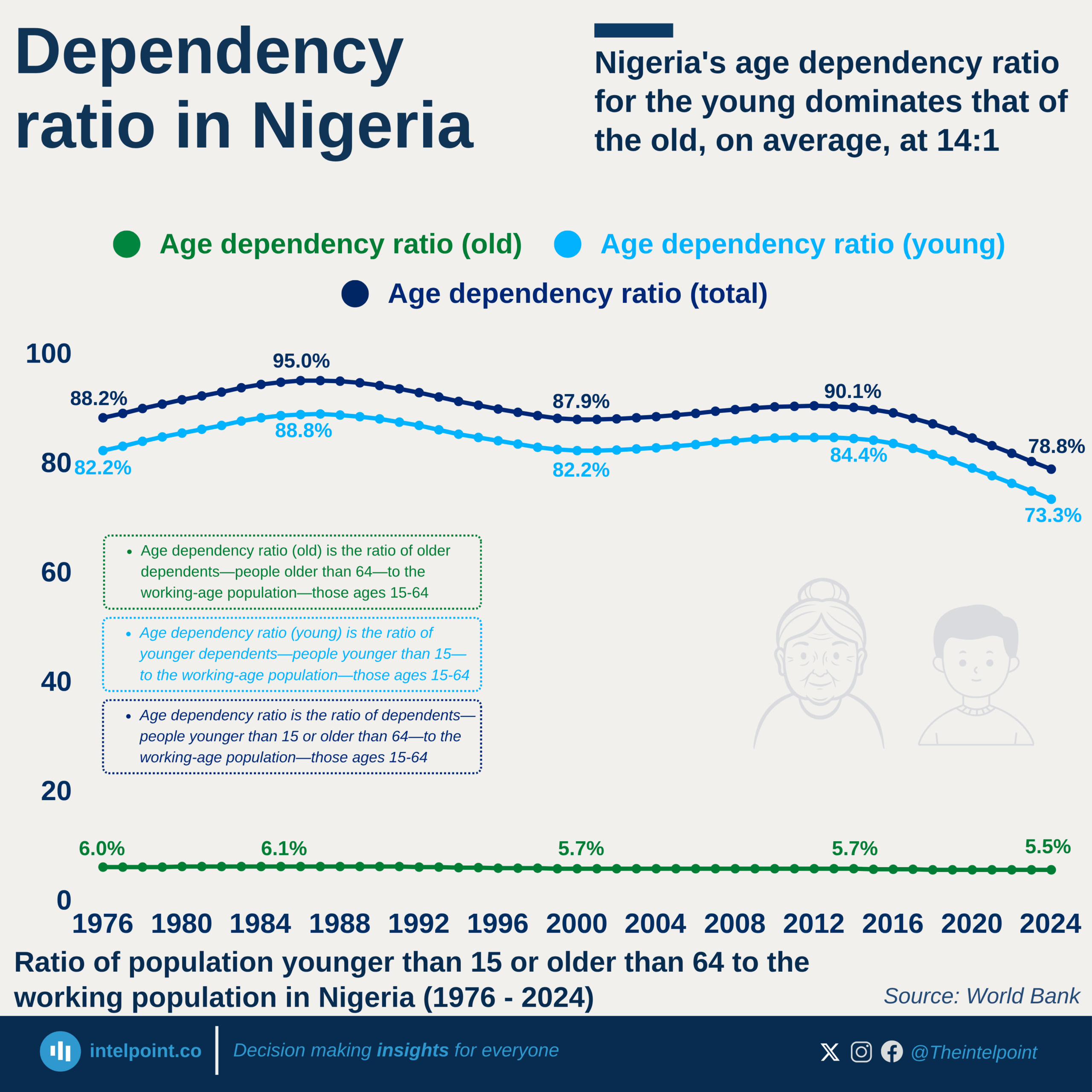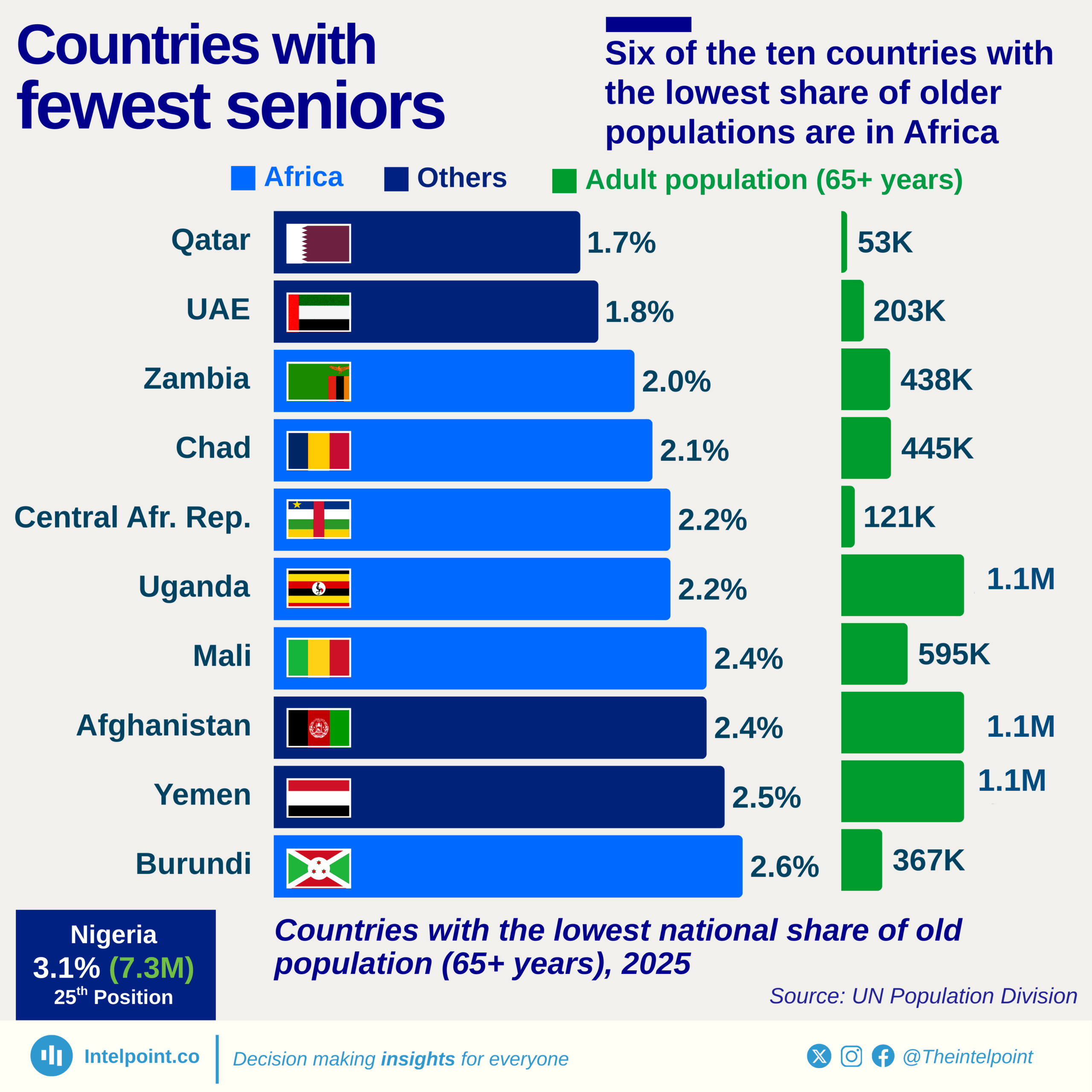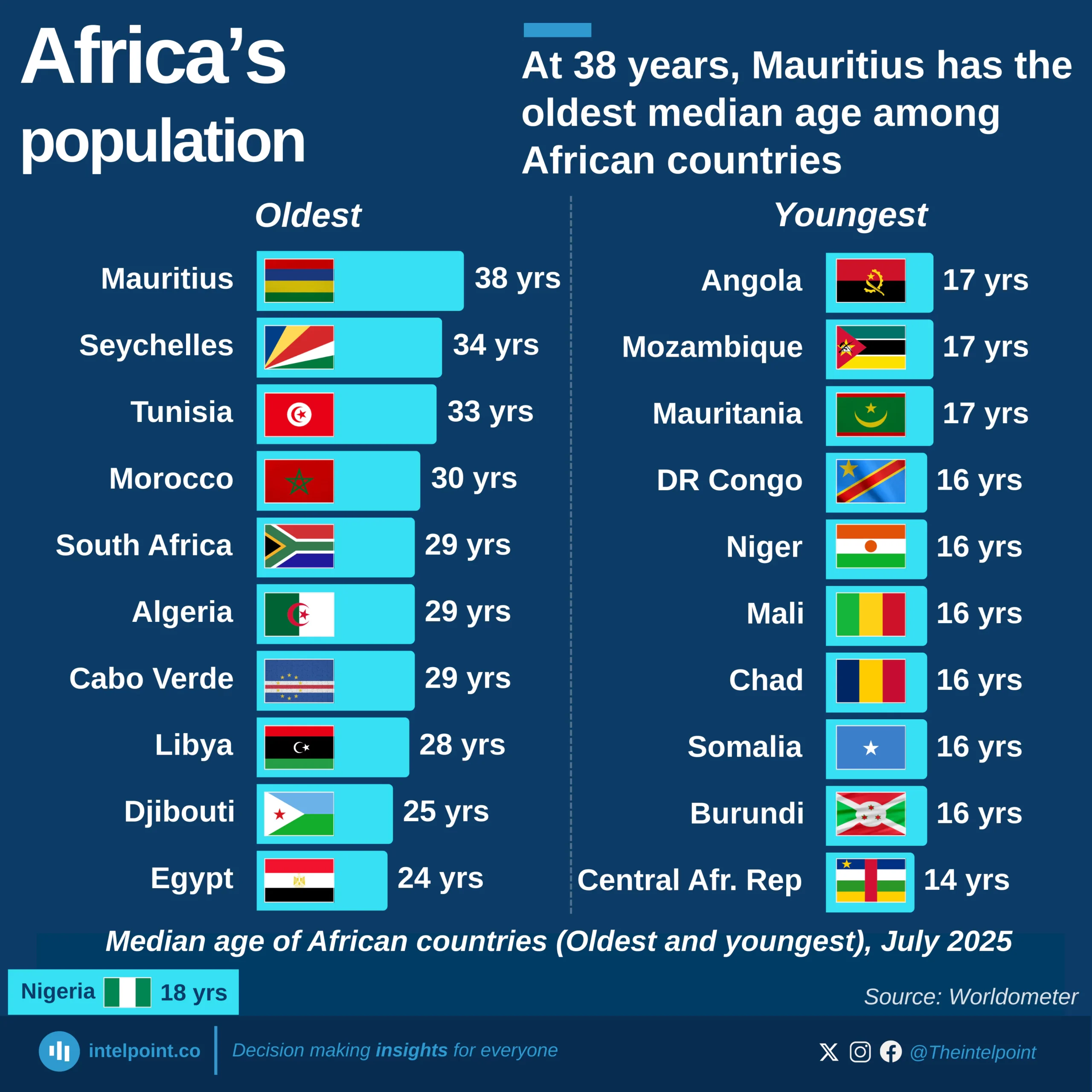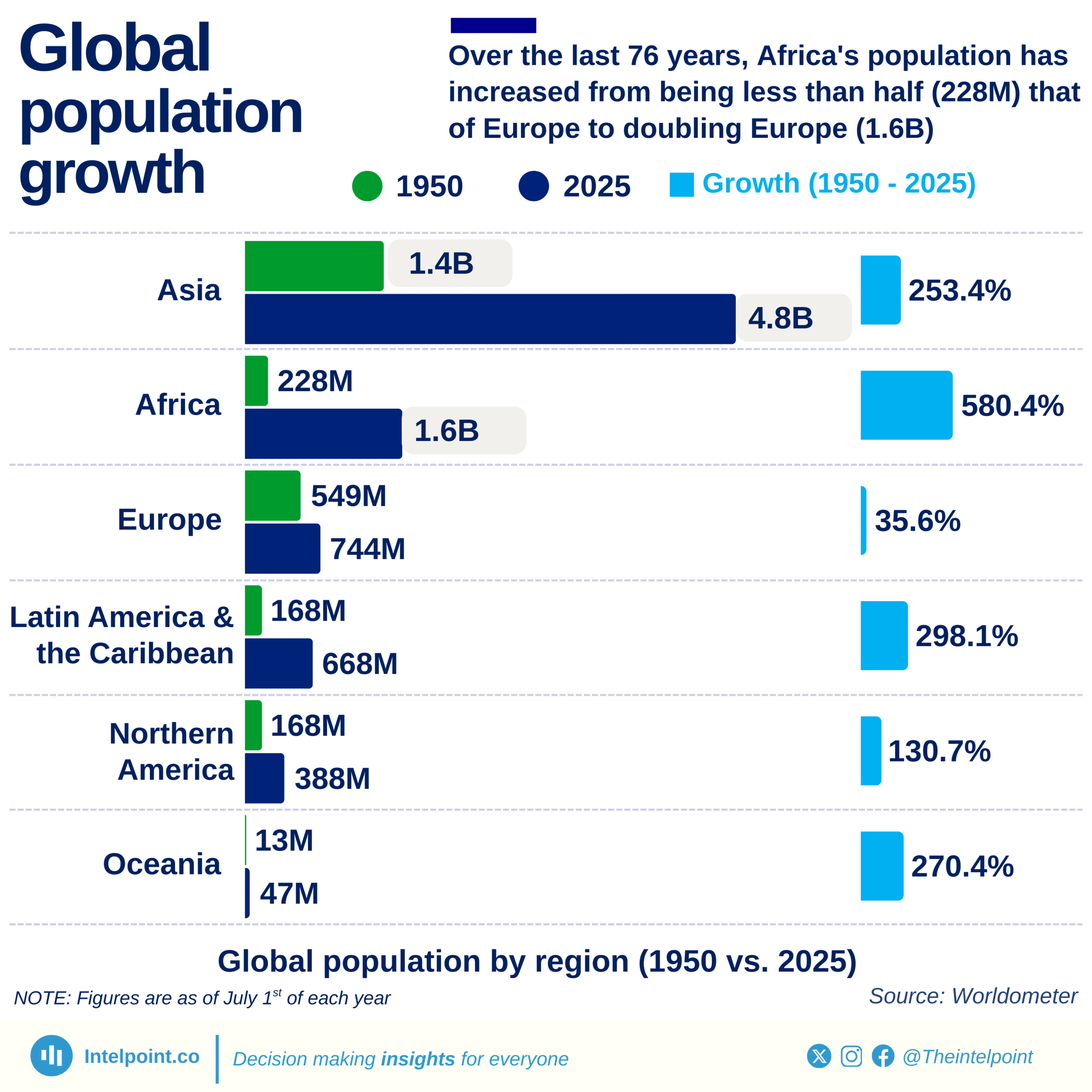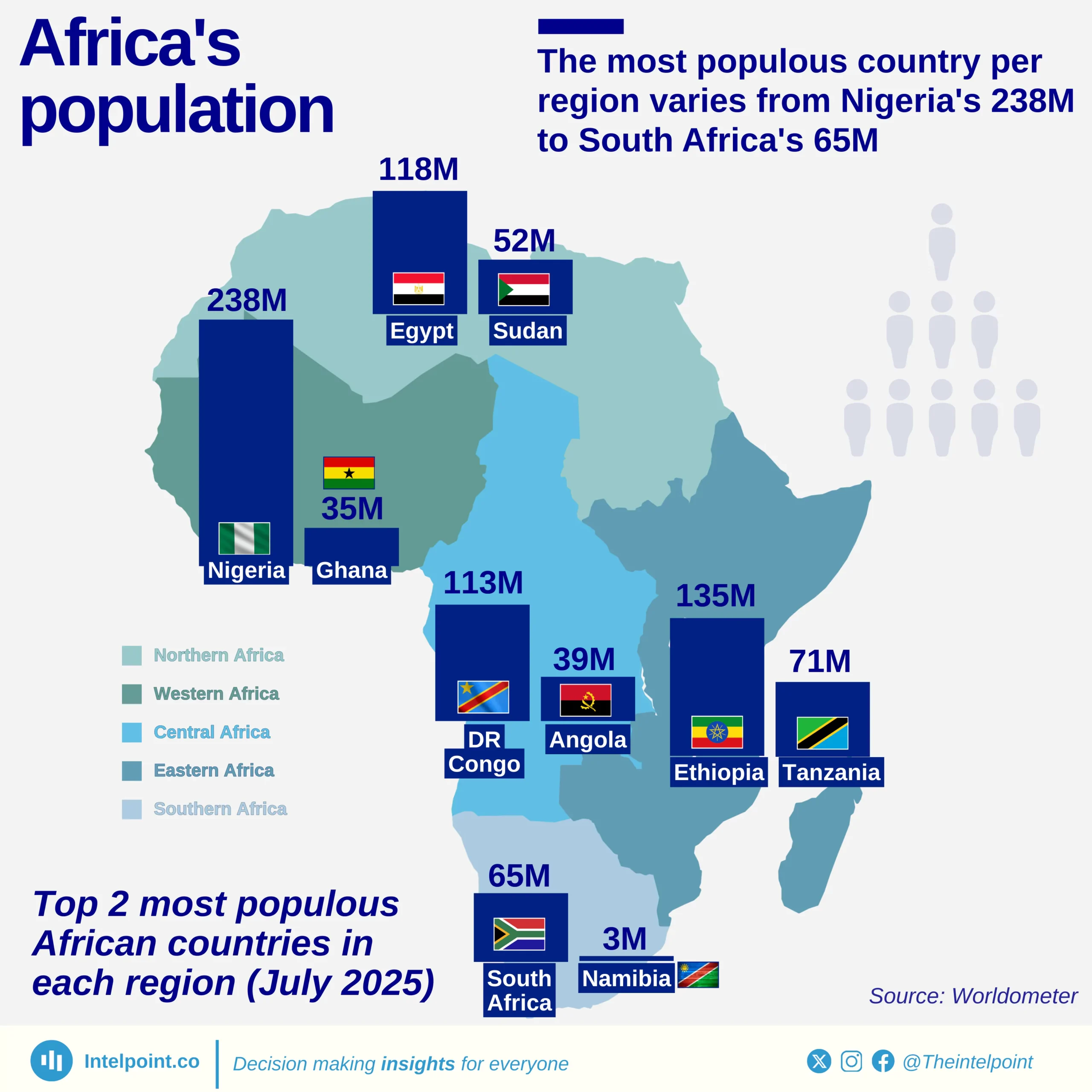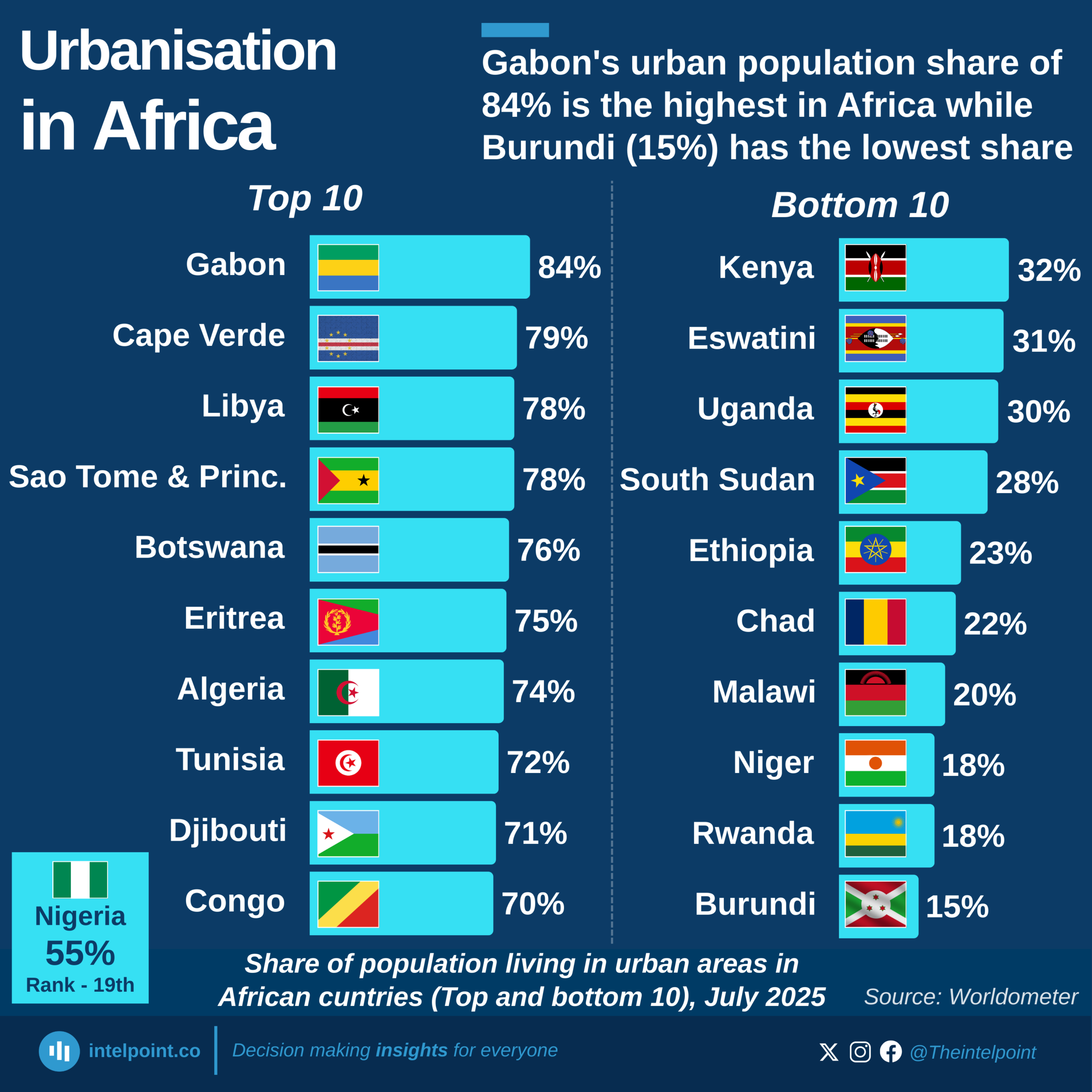Key Takeaways:
By the year 2100, global population dynamics are expected to shift dramatically. Seven African countries (Nigeria, the Democratic Republic of the Congo, Egypt, Ethiopia, Tanzania, Angola, and Sudan) are projected to be among the 15 most populous nations, collectively accounting for 34.3% of the top fifteen's total population. Nigeria alone is expected to reach approximately 477 million people, making it the fourth most populous country in the world.
Meanwhile, India is projected to maintain its position as the global population leader, with a modest 4.5% increase bringing its population to 1.5 billion. In contrast, China is projected to undergo a significant demographic contraction, with its population falling to 638.7 million, a 55.1% decline from its current size. The U.S. is expected to continue growing, reaching 420 million by 2100 and ranking sixth as against its current position.
